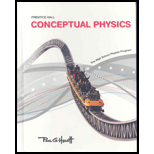
In a lab you burn a 0.6-g peanut beneath 50 g of water. Heat from the peanut Increases the water temperature from
a. Assuming 40% efficiency, show that the food value of the peanut is 3500 calories (3.5 Calories).
b. What is the food value in Calories per gram?

Differences between Heat pump and Air Conditioner
Explanation of Solution
Introduction:
From the surface, an air conditioner and a heat pump may look nearly identical but one among them are often classified because the “reversible jacket” of the HVAC (Heating, ventilation, and air conditioning) world which serve a flexible purpose counting on our indoor thermostat or system settings.
A heat pump could also be the proper HVAC system for us, especially if we are in a neighborhood with a moderate climate, but air conditioners are often the right choice when paired with a furnace to handle the winter heating.
The actual difference between the heat pump and the air conditioner is within the Valve. The heat pump and therefore the air conditioner may believe an equivalent basic refrigeration principle, but if all of the cooling details are identical, there's still one key difference.
A bit like a reversible jacket, the magic happens when there's a change in direction. In the heat pump, a flip within the direction of refrigeration leads to warm air being pushed through the inside vents our home.
Unlike an air conditioner, a heat pump is meant with a reversing valve that automatically changes the direction of the refrigerant flow when heat is required rather than air conditioner. The refrigeration cycle is predicated on the physical principles that heat flows to cold, and a liquid expanding into a gas pulls heat from its surroundings. When the reversing valve flips to the warmth mode, the refrigerant becomes cold enough within the outdoor coil to soak up heat from the surface air. This is often opposite from the cooling mode when heat is absorbed from the indoor air by the indoor coil.
Here’s how it works:
(i) The reversing valve changes the direction of the refrigeration cycle, causing the surface coil to function because the evaporator and therefore the indoor coil to function because the condenser.
(ii) Because the refrigerant flows through the outdoor coil, the refrigerant changes from a gas to a liquid because it absorbs heat from the surface air.
(iii) Although outside temperature is cold, enough outdoor heat is absorbed by the chilled external coil and released inside by the nice and cozy indoor coil within the air handler.
(iv) Cool air from the within of our home is pulled into duct work by a motorized fan within the air handler.
(v) Once the warmth energy is transferred from the indoor coil to the cool indoor air, it becomes warm.
(vi) A pump, called a compressor, is employed to maneuver the refrigerant between the 2 coils and to vary the pressure of the refrigerant.
(vii) This warm air is pushed through connecting ducts to air vents throughout the house, increasing the inside temperature until it reaches the point on your thermostat or system.
(viii) When the indoor temperature reaches the point on our thermostat or system, the warmth pump pauses until our indoor air gets too cold.
(ix) The refrigeration cycle continues, year after year, providing a uniform method to stay us warm.
Conclusion:
Many years ago, heat pumps were installed in locations that typically experience less cold. However today, air-source heat pump technology has advanced enabling these systems to be utilized in some areas with extended periods of subfreezing temperatures.
Chapter 22 Solutions
Conceptual Physics: The High School Physics Program
Additional Science Textbook Solutions
College Physics: A Strategic Approach (3rd Edition)
Modern Physics
College Physics
Essential University Physics (3rd Edition)
The Cosmic Perspective Fundamentals (2nd Edition)
 College PhysicsPhysicsISBN:9781305952300Author:Raymond A. Serway, Chris VuillePublisher:Cengage Learning
College PhysicsPhysicsISBN:9781305952300Author:Raymond A. Serway, Chris VuillePublisher:Cengage Learning University Physics (14th Edition)PhysicsISBN:9780133969290Author:Hugh D. Young, Roger A. FreedmanPublisher:PEARSON
University Physics (14th Edition)PhysicsISBN:9780133969290Author:Hugh D. Young, Roger A. FreedmanPublisher:PEARSON Introduction To Quantum MechanicsPhysicsISBN:9781107189638Author:Griffiths, David J., Schroeter, Darrell F.Publisher:Cambridge University Press
Introduction To Quantum MechanicsPhysicsISBN:9781107189638Author:Griffiths, David J., Schroeter, Darrell F.Publisher:Cambridge University Press Physics for Scientists and EngineersPhysicsISBN:9781337553278Author:Raymond A. Serway, John W. JewettPublisher:Cengage Learning
Physics for Scientists and EngineersPhysicsISBN:9781337553278Author:Raymond A. Serway, John W. JewettPublisher:Cengage Learning Lecture- Tutorials for Introductory AstronomyPhysicsISBN:9780321820464Author:Edward E. Prather, Tim P. Slater, Jeff P. Adams, Gina BrissendenPublisher:Addison-Wesley
Lecture- Tutorials for Introductory AstronomyPhysicsISBN:9780321820464Author:Edward E. Prather, Tim P. Slater, Jeff P. Adams, Gina BrissendenPublisher:Addison-Wesley College Physics: A Strategic Approach (4th Editio...PhysicsISBN:9780134609034Author:Randall D. Knight (Professor Emeritus), Brian Jones, Stuart FieldPublisher:PEARSON
College Physics: A Strategic Approach (4th Editio...PhysicsISBN:9780134609034Author:Randall D. Knight (Professor Emeritus), Brian Jones, Stuart FieldPublisher:PEARSON





